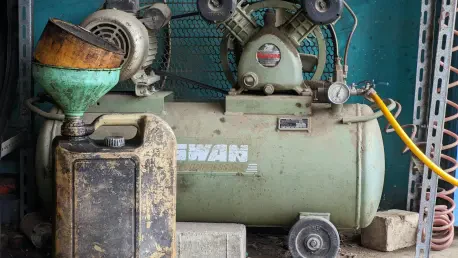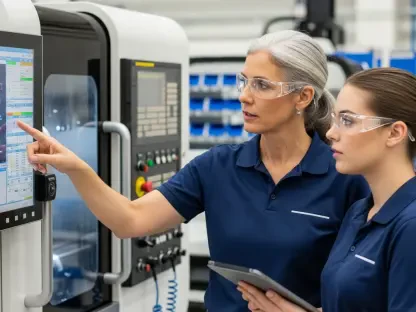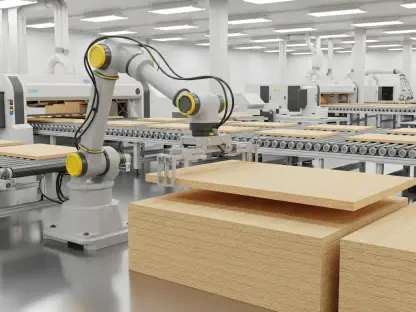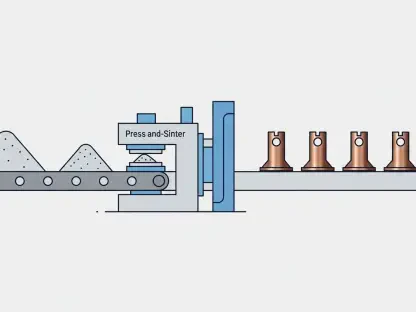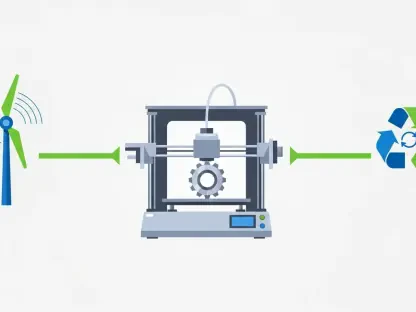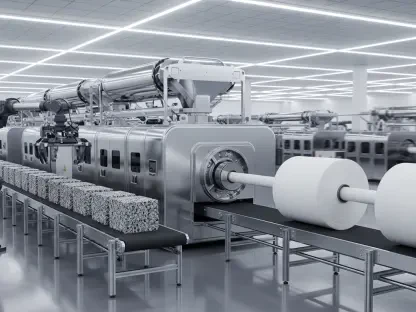The industrial air compressor market stands as a cornerstone of the broader industrial machinery sector, providing essential equipment that powers a vast array of processes across manufacturing, construction, automotive, oil and gas, and food and beverage industries. With a projected valuation of USD 22.08 billion in 2025, climbing to an impressive USD 30.89 billion by 2032 at a compound annual growth rate (CAGR) of 4.9%, this market showcases remarkable potential for expansion. This growth is fueled by rapid industrialization, particularly in emerging economies, alongside a global push for energy-efficient technologies. As industries worldwide strive to meet stringent environmental standards and optimize operational efficiency, the demand for advanced compressed air systems continues to surge, setting the stage for a dynamic and evolving landscape.
This upward trajectory is not merely a reflection of increased industrial activity but also a response to transformative trends like automation and sustainability. The integration of cutting-edge technologies, such as IoT-enabled compressors, is reshaping how industries operate, offering solutions that minimize downtime and enhance productivity. Meanwhile, competitive forces drive major players to innovate and expand, ensuring that the market remains vibrant and responsive to diverse needs. From regional growth hubs to niche applications, the industrial air compressor sector presents a compelling opportunity for stakeholders and investors aiming to capitalize on these developments.
Market Overview and Key Themes
Growth Drivers and Industry Applications
The industrial air compressor market is experiencing robust growth, propelled by the accelerating pace of industrial expansion and the widespread adoption of automation across various sectors. Emerging economies, especially in the Asia-Pacific region, are at the forefront of this surge, with countries like China and India investing heavily in manufacturing and infrastructure projects. These developments necessitate reliable compressed air systems to power machinery and tools, ensuring seamless production processes. Additionally, automation in industries demands a consistent, high-quality air supply, further amplifying the need for advanced compressor technologies that can support sophisticated systems without interruption.
Beyond automation, the emphasis on sustainability is reshaping market dynamics as industries face mounting pressure to reduce energy consumption and adhere to environmental regulations. Governments worldwide are implementing strict guidelines, compelling businesses to transition from outdated, energy-intensive equipment to modern, eco-friendly alternatives. This shift not only aligns with global efforts to lower carbon footprints but also drives demand for innovative air compressors designed to optimize energy use. The convergence of industrial growth and environmental responsibility creates fertile ground for market expansion, positioning energy efficiency as a pivotal factor in shaping future trends.
Technological Innovations
Technological advancements are revolutionizing the industrial air compressor market, with smart, IoT-enabled systems emerging as game-changers for operational efficiency. These cutting-edge compressors provide real-time monitoring capabilities, allowing businesses to track performance metrics and detect potential issues before they escalate. Predictive maintenance features further enhance reliability by scheduling repairs proactively, minimizing downtime and reducing long-term costs. As industries increasingly prioritize data-driven decision-making, the adoption of such technologies is becoming a competitive necessity, particularly in high-stakes sectors like manufacturing and oil and gas.
Moreover, the integration of digital solutions is not just about efficiency but also about meeting evolving customer expectations for smarter, more connected equipment. Manufacturers are investing heavily in research and development to refine these technologies, ensuring that their products offer seamless integration with broader industrial systems. This focus on innovation extends to enhancing user interfaces and remote control options, making compressors more accessible and adaptable to diverse operational environments. As digitalization continues to permeate industrial processes, the role of technology in driving market growth becomes ever more pronounced, setting a new standard for performance and reliability.
Market Segmentation and Growth Projections
Product Types and Dominance
The industrial air compressor market is segmented into various product types, each catering to specific industrial needs, with rotary screw compressors leading the pack due to their superior efficiency and durability. These systems are particularly favored in settings requiring continuous operation, such as large-scale manufacturing plants, where a consistent air supply is critical. Their ability to handle heavy workloads with minimal maintenance makes them a preferred choice over traditional alternatives. Meanwhile, piston compressors retain relevance in smaller-scale or cost-sensitive applications, offering simplicity and affordability, while centrifugal compressors are gaining ground in high-capacity industries like oil and gas, where vast air volumes are essential.
Diversity in product offerings allows the market to address a wide spectrum of demands, from niche applications to broad industrial requirements. Manufacturers are continually refining these technologies to enhance performance and energy efficiency, responding to sector-specific challenges. For instance, advancements in centrifugal compressor designs are targeting energy-intensive operations, significantly reducing operational costs. This adaptability across product types not only fuels market growth but also ensures that businesses of varying scales and sectors can find tailored solutions, reinforcing the market’s resilience and expansive reach through 2032.
Application Segments
Manufacturing stands as the dominant application segment in the industrial air compressor market, driven by its extensive reliance on compressed air for production lines, assembly processes, and material handling. This sector’s need for precision and reliability in operations ensures a steady demand for high-performance compressors that can sustain long hours of use without faltering. From powering pneumatic tools to facilitating automated systems, air compressors are integral to maintaining efficiency and productivity, making manufacturing a cornerstone of market growth. This dominance is expected to persist as global manufacturing hubs expand, particularly in developing regions.
Beyond manufacturing, other industries like construction, automotive, oil and gas, and food and beverage are significant contributors to market expansion, each with unique requirements. Construction benefits from compressors in powering tools for infrastructure projects, driven by urbanization trends worldwide. Automotive production relies on them for painting and assembly, while oil and gas operations use compressed air in exploration and refining. The food and beverage sector, though smaller, is growing rapidly due to stringent hygiene standards necessitating oil-free air for packaging and processing. This broad application base underscores the market’s versatility, highlighting its critical role across diverse industrial landscapes.
Competitive Landscape and Strategic Moves
Key Players and Initiatives
The industrial air compressor market is characterized by intense competition, with industry giants like Ingersoll Rand, Atlas Copco, and Kaeser Kompressoren setting benchmarks through innovation and strategic positioning. These companies dominate by consistently delivering high-quality, reliable products that meet the evolving needs of industrial clients. Their focus on building robust global supply chains ensures accessibility across diverse markets, while substantial investments in cutting-edge technologies keep them ahead of emerging trends. Such leadership not only shapes industry standards but also drives smaller competitors to elevate their offerings, fostering a dynamic and innovative market environment.
Strategic initiatives like mergers and acquisitions play a crucial role in how leading players maintain and expand their market presence. By acquiring complementary businesses or technologies, these firms broaden their product portfolios and enter new geographic territories with greater ease. Partnerships with local entities in high-growth regions further enhance their ability to cater to specific market demands, ensuring relevance and competitiveness. This proactive approach to consolidation and collaboration reflects a broader industry trend where adaptability and scale are key to sustaining long-term growth, particularly in a landscape marked by rapid technological and economic shifts.
Market Strategies
Innovation in product development remains a cornerstone strategy for companies aiming to secure a competitive edge in the industrial air compressor market. Leading manufacturers are launching energy-efficient models and smart systems that integrate seamlessly with modern industrial setups, addressing the dual needs of performance and sustainability. These advancements often stem from rigorous research and development efforts focused on reducing energy consumption and enhancing operational longevity. By prioritizing such innovations, firms not only meet regulatory requirements but also appeal to cost-conscious industries seeking to optimize expenses without compromising on quality or output.
Regional expansion into high-growth areas, particularly in Asia-Pacific, is another critical strategy shaping the market’s competitive dynamics. Companies are establishing manufacturing facilities and distribution networks in countries experiencing rapid industrialization, ensuring proximity to key customers and reducing logistical costs. Tailored marketing approaches and localized product adaptations further strengthen their foothold in these diverse markets. This strategic emphasis on geographic diversification, combined with a commitment to innovation, positions major players to capitalize on emerging opportunities, driving sustained market growth through 2032 while navigating challenges like fluctuating raw material costs.
Regional Dynamics and Investment Opportunities
Geographic Growth Patterns
Asia-Pacific emerges as the fastest-growing region in the industrial air compressor market, fueled by unprecedented levels of industrialization and infrastructure investment in countries like China, India, and Japan. These nations are becoming global manufacturing hubs, necessitating extensive use of compressed air systems to support expanding production capacities. Government policies promoting industrial growth, coupled with urbanization, further accelerate demand for reliable and efficient compressors. This region’s dynamic economic landscape presents a wealth of opportunities for market players to establish a strong presence, leveraging the high volume of industrial activity to drive significant revenue growth over the forecast period.
In contrast, North America and Europe represent more mature markets where growth is driven by modernization efforts and a focus on sustainability. In the United States, a robust industrial base and advancements in automation sustain steady demand, while European countries prioritize replacing aging infrastructure with energy-efficient systems to comply with stringent environmental regulations. Both regions emphasize technological upgrades over sheer volume growth, reflecting a shift toward quality and eco-consciousness. This focus on innovation and regulatory alignment ensures continued relevance in the global market, balancing the rapid expansion seen in emerging economies with steady, sustainable progress.
Emerging Markets Potential
South America and the Middle East & Africa, while smaller in current market share, offer substantial untapped potential for industrial air compressor growth, driven by ongoing infrastructure projects and energy sector developments. In South America, countries undergoing urbanization and industrial diversification require compressed air systems for construction and manufacturing, creating burgeoning demand. The Middle East & Africa, with their focus on oil and gas exploration alongside infrastructure initiatives, rely heavily on robust compressor technologies to support both upstream and downstream operations. These regions represent fertile ground for market expansion, particularly for firms willing to navigate local challenges and tailor solutions accordingly.
Investors eyeing these emerging markets can benefit significantly from strategic partnerships with local companies, which provide insights into regional needs and distribution networks. Customizing product offerings to address specific environmental or operational conditions—such as extreme climates or resource constraints—can further enhance market penetration. While challenges like political instability or supply chain disruptions exist, the long-term growth prospects in these areas are promising, driven by increasing industrial activities and foreign investments. This potential underscores the importance of a nuanced, region-specific approach to capitalize on the diverse opportunities these markets present through 2032.
